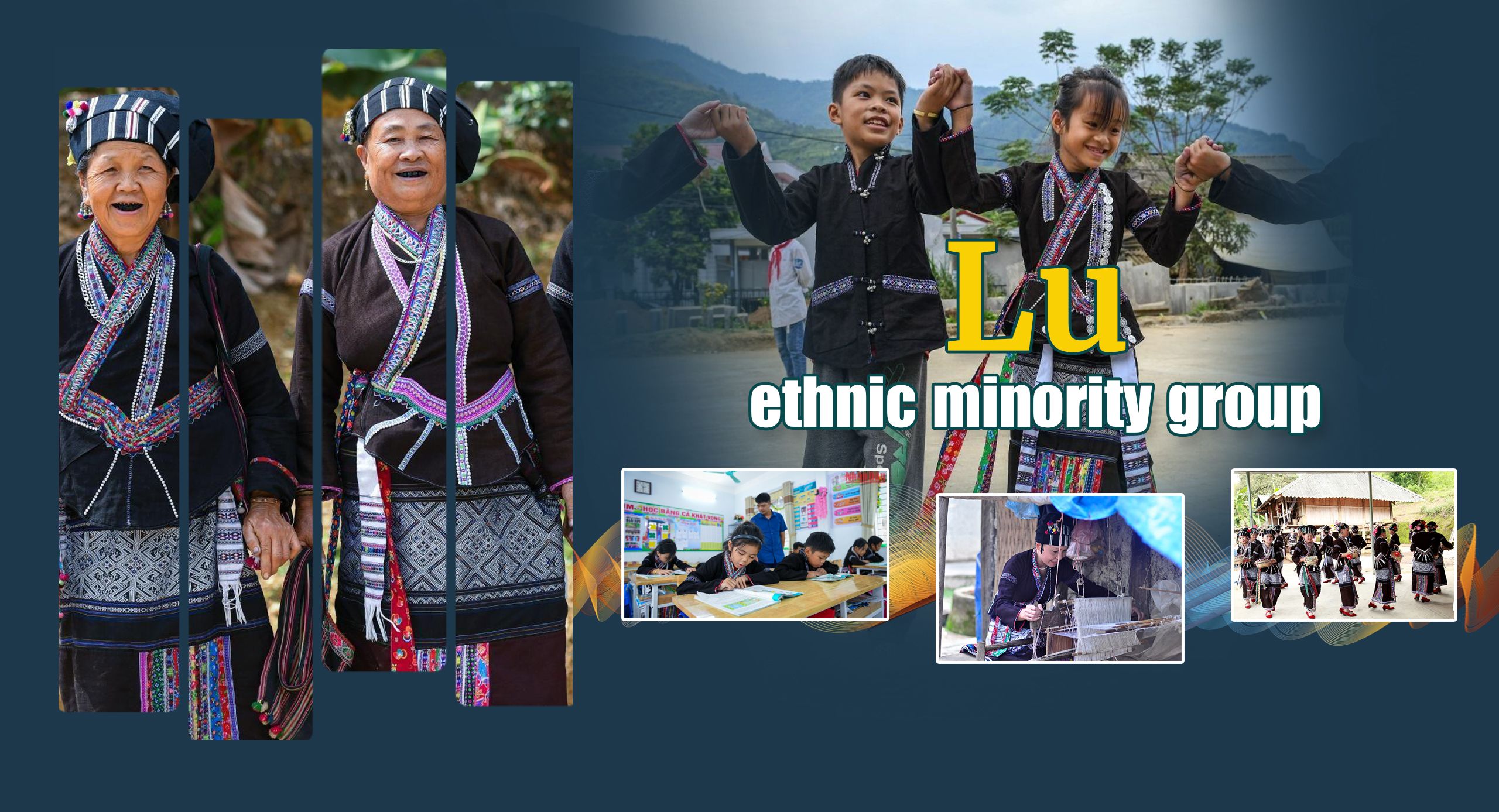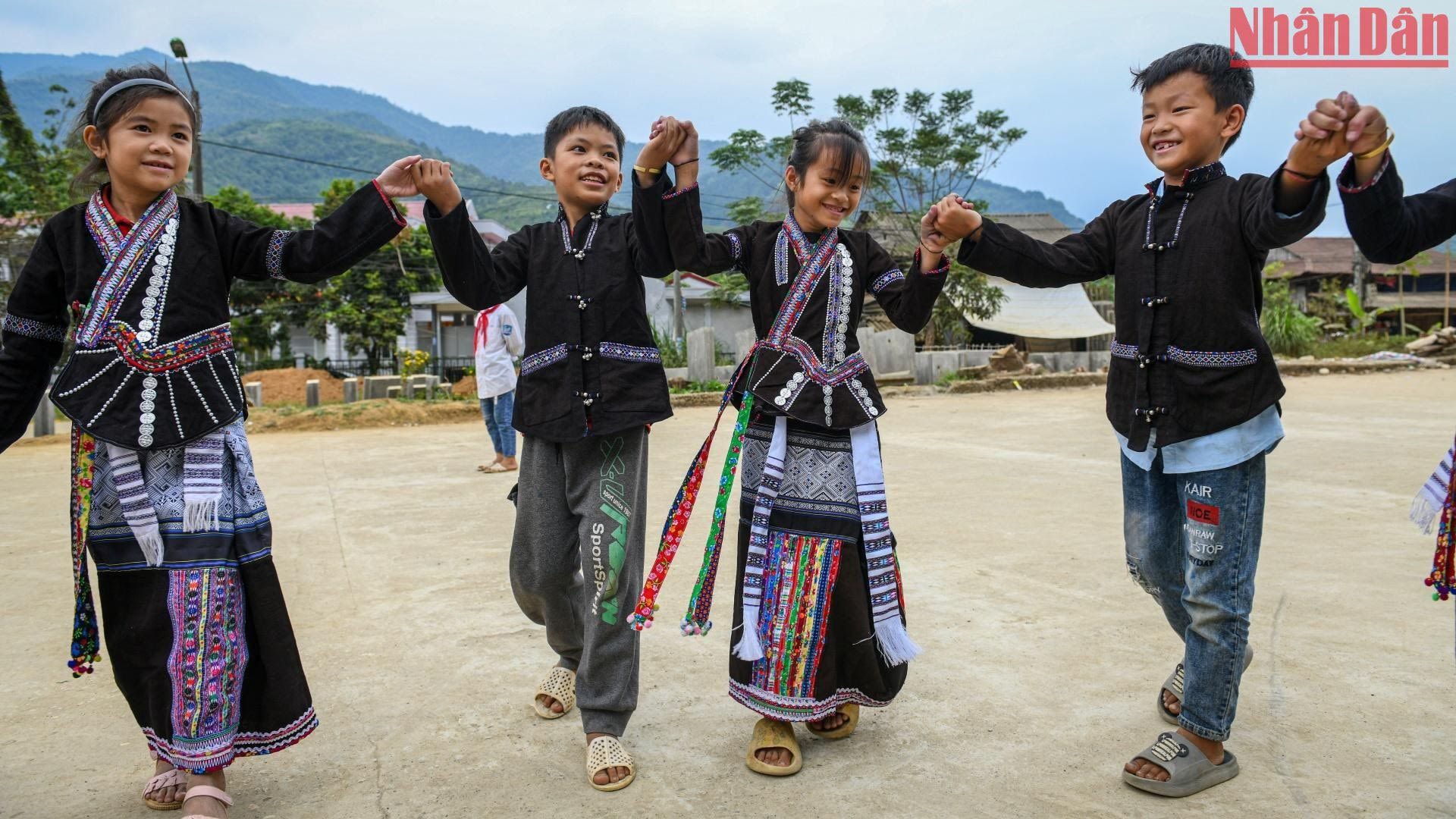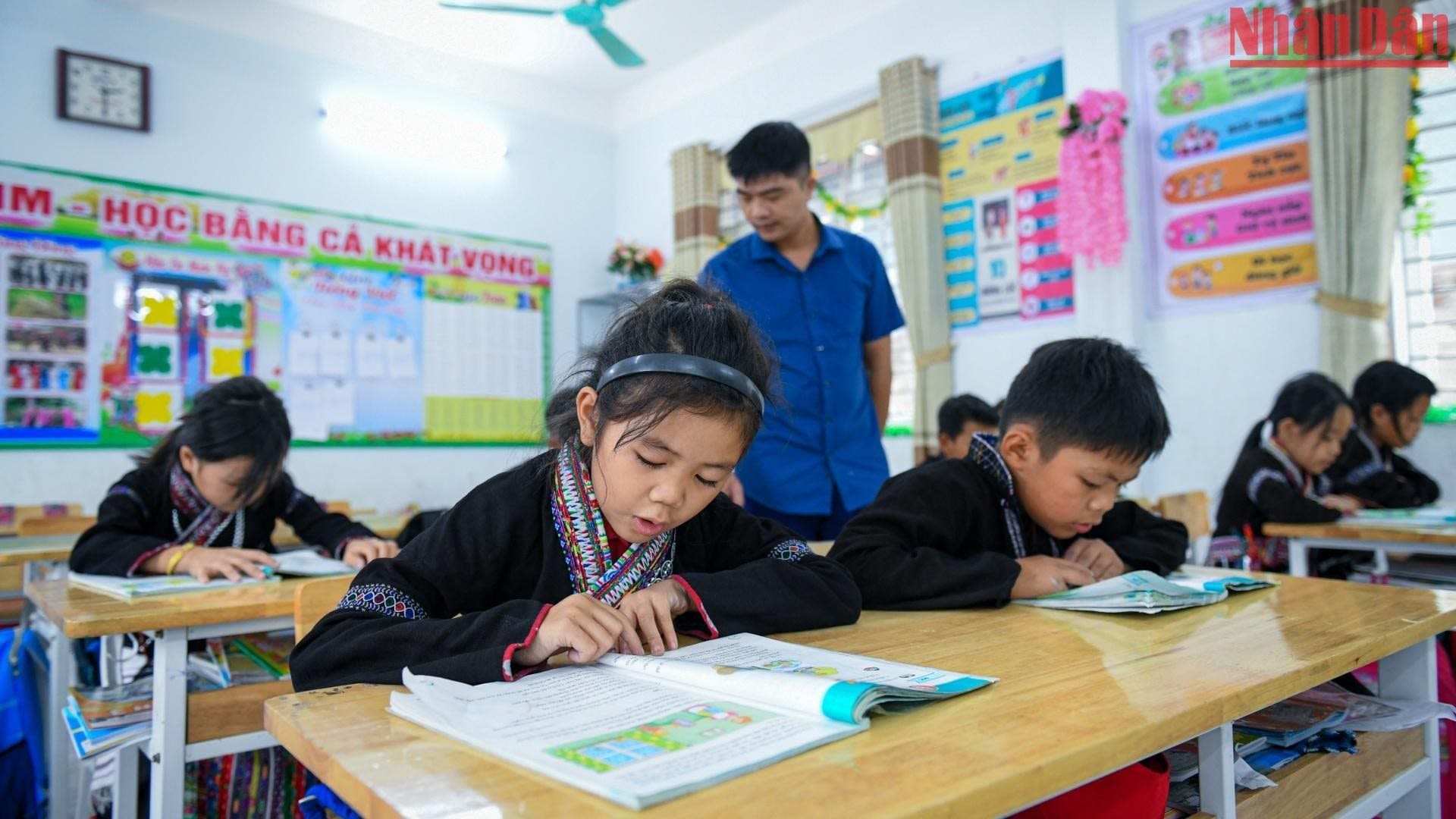
Lu people were present in the Xam Mun area (in Dien Bien Province) at least before the 11th and 12th centuries. Here they built Xam Mun (Tam Van) Citadel and exploited many fields.
• Language: The official language of the Lu ethnic minority group is Lu, which belongs to the Tay-Thai language group, in the Kra-Dai (Tai-Kadai) language family. Lu people also use the official language of the countries in which they live.
• Residence: Today, Lu ethnic people live mainly in the communes of Ban Hon, Binh Lu, and Na Tam in Tam Duong District (previously Phong Tho District); and Ma Quai and Nam Tam Communes in Sin Ho District of Lai Chau Province. A few of them live scattered and interspersed with Thai people in Dien Bien District in the province of the same name, and Than Uyen District in Lai Chau Province.
• History: Lu people were present in the Xam Mun area (in Dien Bien Province) at least before the 11th and 12th centuries. Here they built Xam Mun (Tam Van) Citadel and exploited many fields. During the feudal wars, the Lu had to disperse to many places, a small part fled to live in the mountains of Phong Tho and Sin Ho.
1. Historical Origin
Lu people were present in the Xam Mun area (in Dien Bien Province) at least before the 11th and 12th centuries. Here they built Xam Mun (Tam Van) Citadel and exploited many fields. During the feudal wars, the Lu had to disperse to many places, a small part fled to live in the mountains of Phong Tho and Sin Ho.
The basic research works are consistent with the history of Lu people in Vietnam. In general, researchers believe that they originated in southwestern China, mainly from Yunnan Province, moving into Vietnam before and after the first millennium AD. They were one of the earliest communities to establish a presence in the Northwest and have achieved a certain level of development in this area.
During their existence and development in the Northwest, they had historical and social relationships with many ethnic groups, especially with the Black Thai community, which was led by landlords in occupying the land, especially valley areas - which are favorable for agricultural economy in mountainous areas. They also have ties to the Lu community in China and Laos.
2. Geographic distribution
Today, Lu ethnic people live mainly in the communes of Ban Hon, Binh Lu, and Na Tam in Tam Duong District (previously Phong Tho District); and Ma Quai and Nam Tam Communes in Sin Ho District of Lai Chau Province. A few of them live scattered and interspersed with Thai people in Dien Bien District in the province of the same name, and Than Uyen District in Lai Chau Province.
Lu people live in a relatively concentrated and isolated village community in the lowlands along the foothills and small valleys. In Lai Chau Province, Lu people reside in 17 villages in four communes of two districts, with a population of at least 19 households consisting of over 100 people in Bai Trau Village (Ban Hon Commune, Tam Duong District) and more than 120 households with more than 600 people in Dong Pao Village (Ban Hon Commune, Tam Duong District).
3. Population, language
Population: According to the census data on 53 ethnic minorities as of 1 April 2019, the total population of Lu is 6,757 (of which 3,439 are male and 3,318 female).
Language: The official language of Lu people is Lu, belonging to the Tay-Thai language group, the Kra-Dai (Tai-Kadai) language family. Lu people also use the official language in the countries where they live.
Lu ethnic group has its own voice and language, creating a unique cultural identity. In communications among members, they still use traditional languages. In addition, they also use Vietnamese to communicate with other communities. Additionally, they also learn and use some languages of the Thai, Laos, and H’Mong ethnic minority groups.
4. Main features
Traditional social institutions: In a traditional society, each village has a patriarch elected by villagers. That person is trustworthy, good in business and responsible for the community as well as has an important role in the local government system. The patriarch is accompanied by two deputy heads of the village. The villages also set up village councils with members of elders and heads of family lines. The council has helped the village authority in the administration, management, maintenance of security and order, economic development, etc.
Lu villages operate according to the common conventions of the community. All members of the village must voluntarily abide by the regulations on marriage, wedding, funeral, land management, water source protection, security and order, common beliefs, etc.
Religion and belief: Lu people believe that the universe has three layers: Muong Pha (heaven) - the highest layer and the residence of the ancestors, Muong Pieng (the ground layer) - the world of people and things, Muong Lum (the bottom layer) - the world of dwarves located deep in the ground.
Lu people's folk beliefs are polytheistic. Lu people believe that living bodies have souls and they turn into ghost when they die. Lu people say there are good and evil ghosts. Good ghosts are ancestral and village ghosts; they often bless their children and grandchildren with good health, good crops, and the development of livestock. Evil ghosts are ghosts of people who die suddenly and receive no worship; they disturb food as well as river, stream, and forest ghosts.
In their folk beliefs, Lu people have paid great attention to ancestor worship rituals. They worship their ancestors in the once a year in the first month of their traditional calendar, equivalent to the 10th lunar month.
Housing: Lu people live in stilts houses. Their house has two roofs thatched with grass. The rear and front roofs extend down to cover the veranda and stairs. Unlike Thai and Lao ethnic people, the Lu’s house has one door that always faces the northwest and another facing the drying yard.

Photo: Thanh Dat
Photo: Thanh Dat
Folk arts: Lu singing (also called Khap Lu) is a form of a girl using a red cloth to cover her face and singing to the sound of a double flute played by a boy. In the past, at nightfall, couples sit on sedge mats in the middle of the yard and passionately sang and played the flute each other until midnight.
Costumes: Lu women still wear traditional costumes that are hand-woven and embroidered with delicate patterns. All stages from planting cotton, rolling cotton, and spinning yarn to forming a shirt and pants are conducted by Lu women. The female costume set includes a scarf, shirt, skirt, belt, and accompanying jewellery such as earrings, necklace, bracelets, sachets, and bags.
They attach yellow beads with five-colour cotton tassels on each scarf. For unmarried girls, they also attach a white metal strip to the top of the scarf and many cotton tassels squeezed along the band of the scarf behind the head during the holidays and festivals.
During the festivals, elderly women often wear black and tight-fitting long shirts (with (only a short cut at the bottom of the hips), wide-leg and black pants, and white scarves wrapped around their necks. If there is a death in their family, all women must remove the coloured cotton beads and only wear the full set again through a lunar new year.
After their ears are pierced, young girls must wear an ever-increasing number of toothpicks until they are wide enough for them to wear earrings. Earrings consist of a hollow cylindrical block with silver pins in both ends.
Lu men often wear swords, not only for self-defence but also as a decoration. In the past, Lu men also had long beards, tattoos, and ear piercings as well as dyed their teeth black. However, they have abandoned this habit today.
Cuisine: The food source to meet the dietary needs of Lu people is rice, corn, and other crops. Today, traditional customs and dishes still retain their basic features in family and community life. Rice, corn, potatoes, cassava, vegetables, beans, a number of forest products, cattle meat, poultry, aquatic products, etc, are the main sources of raw materials in processing the dishes of the Lu people.
Dishes made from food are sticky rice, rice and porridge made from plain rice. Maize, potatoes, and beans are important auxiliary foods. The dishes are processed in different ways including boiling and steaming.

Photo: Thanh Dat
Photo: Thanh Dat
Education: According to the survey on 53 ethnic minority groups dated April 1, 2019, the rate of Lu ethnic people aged 15 years and over who can read and write is 49.7%, the net attendance rate for children of primary school age is 101.0%, the junior secondary school age is 96.1%, and the senior secondary school age is 54.9%.
5. Economic conditions
Cultivation: The Lu are proficient in wet rice cultivation, pulling buffaloes and oxen to plough and till the land, using green manure to fertilise rice, and creating a complete system of irrigation ditches. Notably, Lu people have the custom of digging ditches around the fields to prevent cattle from destroying the rice while using the soil to build high banks to retain water. They use the cultivation technique of pulling the seedlings twice.
In the process of cultivation, men do heavy works such as ploughing, weeding, threshing, clearing, and burning fields, while women plant, harvest, and dye rice and crops.
Animal husbandry: In addition to farming, animal husbandry is an advantage of the Lu ethnic group. This is an important economic activity in providing traction and meat for households and localities, bringing significant income to households every year. Lu people often raise buffaloes for ploughing and pulling as well as pigs, chickens, and ducks for meat, and horses for carrying rice and corn.
Exploiting natural resources: This is a long-standing livelihood practice in the life of Lu people. Hunting is the work of men, at leisure time or when animals appear during the season of corn, rice, and crops that are about to be harvested. They often hunt individually or in groups.
Craftsmanship: Lu people are famous for their skills in knitting, weaving, silver casting, and jewellery making. Among the household utensils created by them include baskets and tooth dyes, etc. All these products serve their self-sufficient life.